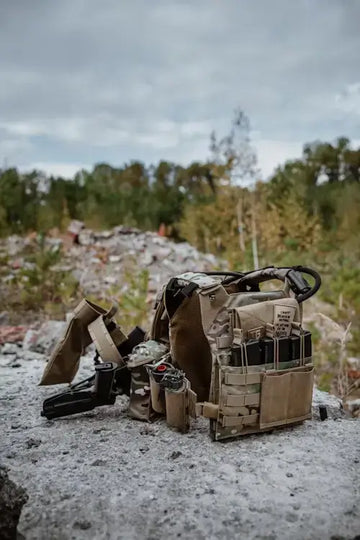
Traveling with a rifle can be a bit daunting, but using a soft rifle case can make the process much easier. Whether you're heading to the range, going on a hunting trip, or traveling by air, there are a few key tips and best practices to keep in mind. Let's dive in.
Airport Regulations
When flying with a rifle, adhering to airport regulations is critical. Here's what you need to know:
- Check Airline Policies: Different airlines have specific rules regarding firearms. Visit your airline's website or call their customer service to get the details. Some airlines may require advance notification that you will be traveling with a firearm.
- Declare Your Firearm: At the airport, inform the check-in agent that you have a firearm. Your rifle must be unloaded and packed in a hard-sided case, even if you're using a soft case for general travel. The hard case must be lockable. For example, a friend of mine once flew with his hunting rifle and had to purchase a specific TSA-approved hard case at the airport because his soft case wasn’t sufficient for air travel.
- Ammo Packing: Ammunition must be stored separately from the firearm. It should be in its original packaging or a secure container designed for ammo. Airlines often have limits on the quantity of ammunition you can carry, usually up to 11 pounds.
- TSA Inspection: After declaring your firearm, TSA will inspect it. Be present during the inspection to open the case if needed. They will place a declaration tag inside the case, indicating that the firearm has been cleared.
- Extra Time: Arrive at the airport earlier than usual. Firearm check-in can take additional time due to inspections and paperwork. Aim to be there at least two hours before domestic flights and three hours before international flights.
Vehicle Storage
Storing your rifle in a vehicle involves several best practices to ensure safety and security:
- Secure Placement: Place the rifle case in the trunk or rear of your vehicle. It should be out of sight to avoid theft. Use tie-down straps if available to prevent the case from sliding around. For instance, during a cross-country hunting trip, I secured my rifle case with bungee cords in the trunk to prevent any movement and ensure it stayed hidden.
- Temperature Considerations: Extreme heat or cold can damage your firearm and ammunition. Avoid leaving the rifle in your vehicle for extended periods, especially in direct sunlight or freezing conditions. If you must leave it, ensure it is well-insulated.
- Locking Mechanisms: Even if your soft case doesn’t come with a built-in lock, consider using a cable lock through the zippers. This adds an extra layer of security and can deter potential thieves.
- Accessibility: In situations where you need quick access to your rifle, such as hunting trips, ensure the case is placed where you can reach it easily but still securely stored. Do not leave it in an unlocked vehicle.
Carrying Methods
Carrying your rifle in a soft case requires strategic handling to ensure comfort and safety:
- Shoulder Straps: Utilize the shoulder straps that come with most soft rifle cases. Adjust the straps to distribute the weight evenly across your shoulders. This helps prevent strain and makes carrying the case more comfortable over long distances.
- Weight Distribution: Use the various compartments within the soft case to balance the weight. Store heavier items like ammunition and scopes closer to your back. This prevents the case from tipping and makes carrying easier. For example, when packing for a range day, I always put my ammo boxes in the middle compartment to balance the load.
- Discreet Handling: In public places, handle your rifle case discreetly. Avoid drawing attention by swinging the case or letting it bump into objects. Hold the case close to your body and move smoothly.
- Environmental Awareness: Be mindful of your surroundings, especially in crowded areas. Avoid placing the case in high-traffic spots where it could be knocked over or tampered with. When seated, keep the case between your legs or within arm's reach.
Checklist
Finally, to ensure you don't miss any crucial steps, use this detailed checklist:
- Check airline policies and regulations: Confirm firearm rules specific to your airline.
- Declare your firearm at check-in: Inform the airline and follow their procedures.
- Ensure the rifle is unloaded and locked in a hard-sided case: Use a TSA-approved lock.
- Pack ammunition separately and securely: Follow airline guidelines for quantity and packaging.
- Allow extra time for TSA inspections: Arrive early to accommodate potential delays.
- Securely place the rifle case in your vehicle’s trunk or rear: Use tie-downs if available.
- Avoid leaving the rifle in extreme temperatures: Insulate if necessary.
- Lock the soft case if possible: Use a cable lock through the zippers.
- Use shoulder straps for comfortable carrying: Adjust straps for even weight distribution.
- Balance the weight within the case: Place heavier items closer to your back.
- Handle the case discreetly and mind your surroundings: Keep it close and secure in public places.
By following these detailed tips and best practices, you can travel with your rifle using a soft case confidently and securely. Always stay informed about regulations and prioritize the safety of both your firearm and those around you. Happy travels!





